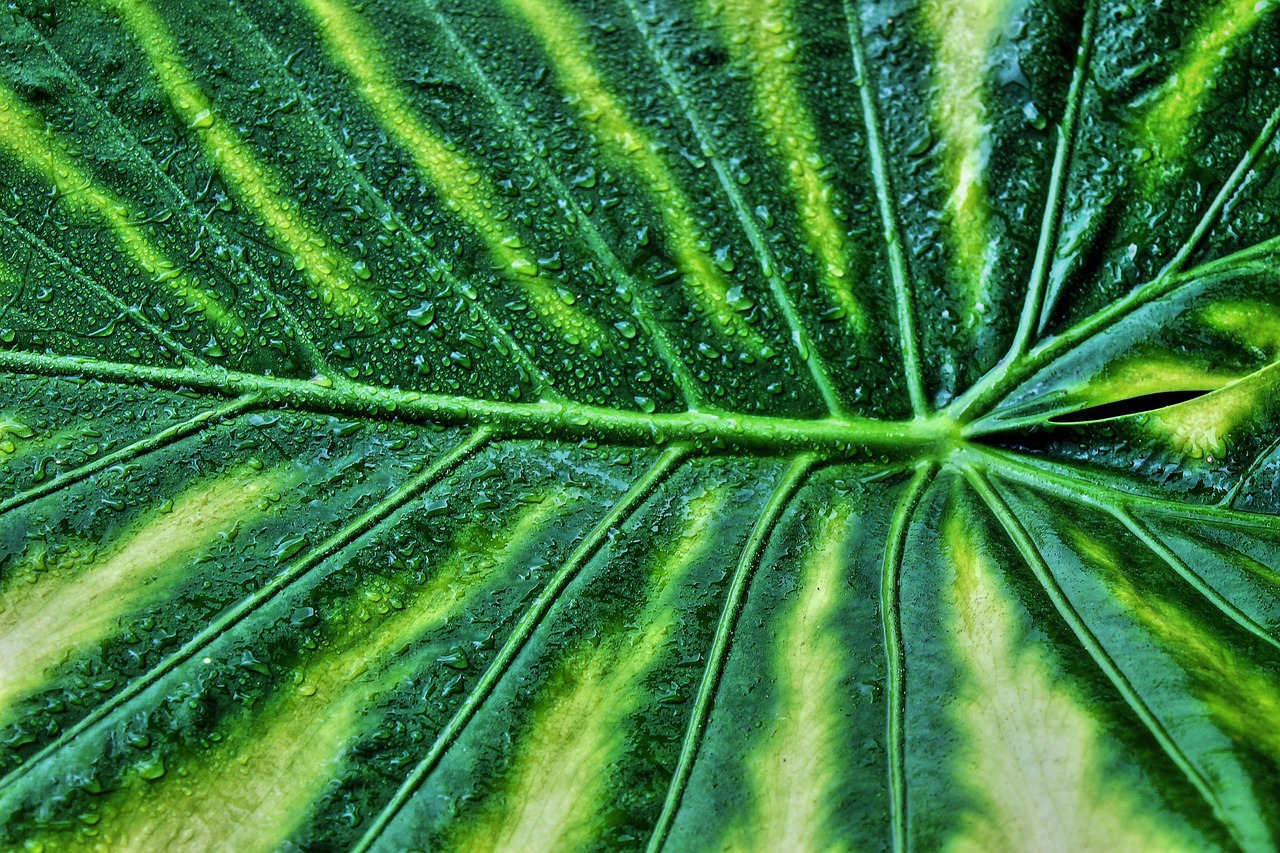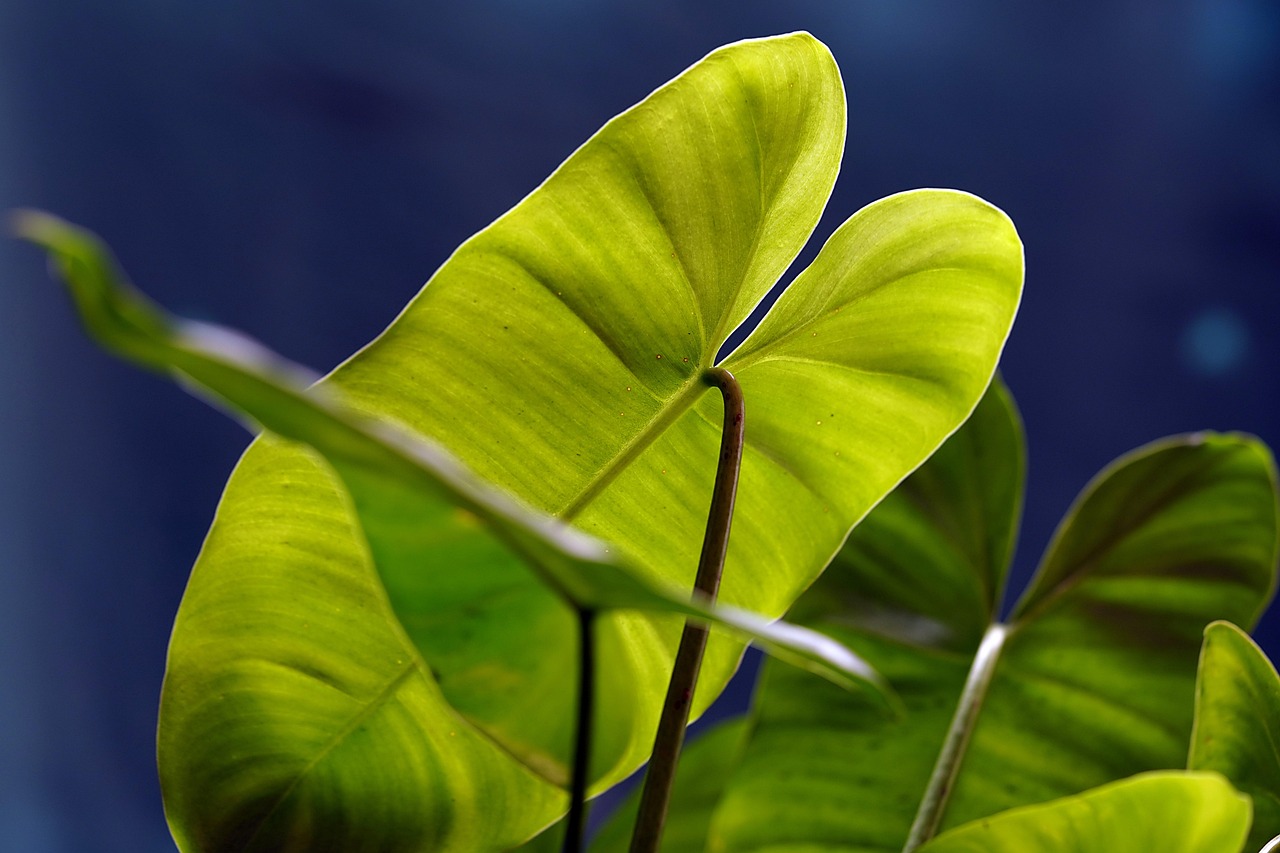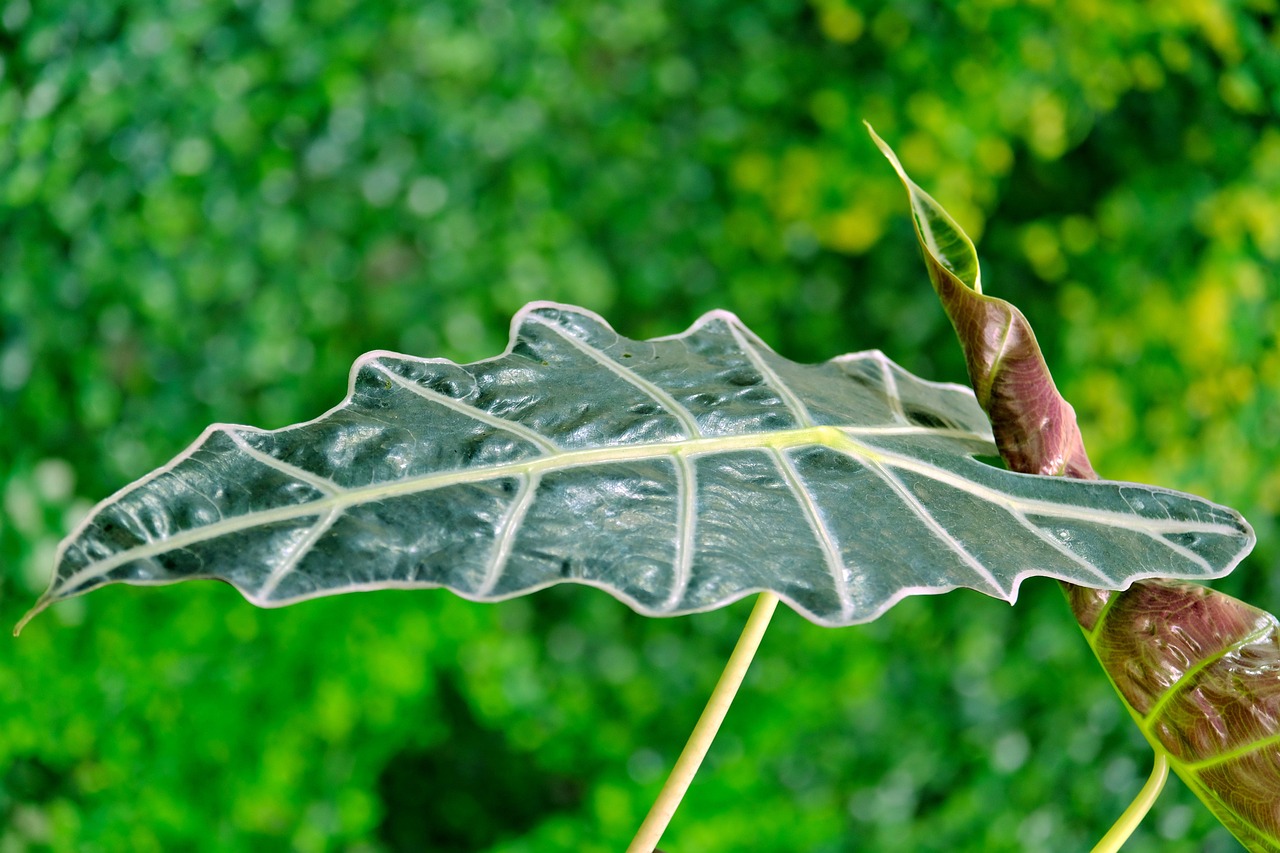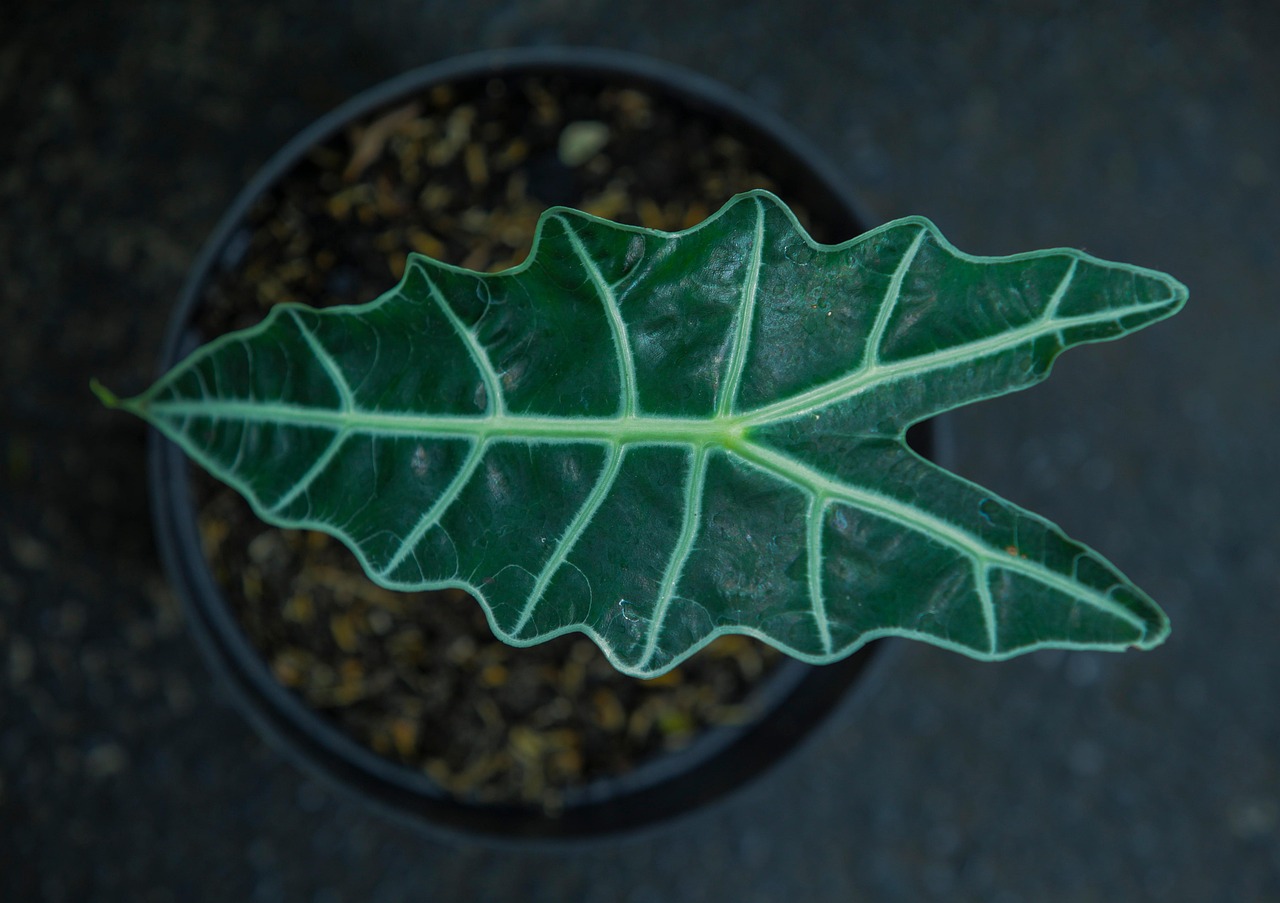The Calidora Alocasia, known for its large, striking leaves, thrives in bright, indirect light and requires careful attention to watering and humidity. Proper care ensures lush growth and vibrant foliage, making it a popular choice for indoor plant enthusiasts.
The Calidora Alocasia, sometimes referred to as the Calidora Elephant Ear, is native to tropical regions. This stunning plant is admired for its large, dramatic leaves that can grow up to three feet long. It adds a touch of the exotic to any home or garden setting. With its impressive foliage, the Calidora Alocasia can elevate the aesthetics of both indoor and outdoor spaces.
However, caring for this plant can be challenging due to its specific environmental needs. Understanding these requirements is essential for successful growth. The following sections will delve into the key aspects of Calidora Alocasia care, including light, water, humidity, soil, and pest management. Each factor plays a vital role in ensuring the plant thrives.
Understanding Light Requirements

Light is one of the most critical factors for the health of the Calidora Alocasia. While this plant enjoys bright conditions, it does not fare well in direct sunlight. Too much sun can scorch the leaves and lead to discoloration.
Here are some important points to consider regarding light:
- The ideal light for Calidora Alocasia is bright, indirect sunlight.
- Placement near east or north-facing windows is optimal.
- Inadequate light can lead to stunted growth and smaller leaves.
To assess whether your plant is receiving adequate light, observe its leaves. If they start stretching towards the light source or losing their vibrant color, it may be time to adjust their location.
Watering Practices
Watering is another crucial element in the care of Calidora Alocasia. This plant enjoys moist soil but can be susceptible to root rot if overwatered. Finding the right balance is key to ensuring healthy growth.
Here are some watering tips:
- Check the top inch of soil; if it feels dry, it’s time to water.
- Water thoroughly until you see drainage from the bottom of the pot.
- Allow the soil to dry out slightly between waterings.
During the growing season, which typically spans from spring to summer, you may need to increase watering frequency. Conversely, reduce watering in the fall and winter months as the plant’s growth slows down.
Humidity Needs
The Calidora Alocasia thrives in high humidity environments. It is accustomed to tropical climates where humidity levels are naturally elevated. To replicate this environment at home, consider the following methods:
- Use a humidifier in the room where the plant is located.
- Group plants together to create a microclimate with higher humidity.
- Place a tray of water with pebbles under the pot to increase humidity around the plant.
Aim for humidity levels above 60% for optimal growth. If the air in your home is dry, especially during winter, providing additional moisture will help keep your Calidora Alocasia healthy and vibrant.
Soil and Fertilization
The right soil mix is essential for the health of your Calidora Alocasia. A well-draining potting mix with organic matter will support healthy root development while preventing water retention issues.
Consider using a soil blend that contains:
- Peat moss or coconut coir for moisture retention
- Pine bark for drainage
- Perlite or vermiculite to improve aeration
Fertilization should also be part of your care routine. During the growing season, use a balanced liquid fertilizer every four to six weeks. This will provide essential nutrients that support growth and leaf development.
Pest Management
Pests can pose a threat to your Calidora Alocasia if not managed properly. Common pests include spider mites, aphids, and mealybugs. Regularly inspect your plant for signs of infestation.
If pests are detected, consider these management strategies:
- Wipe leaves with a damp cloth to remove pests manually.
- Use insecticidal soap or neem oil for treatment.
- Quarantine new plants before introducing them to prevent pest spread.
By staying vigilant and proactive about pest control, you can keep your Calidora Alocasia thriving and free from harmful insects.
Propagation Techniques
Propagating Calidora Alocasia can be an exciting way to expand your plant collection. This process allows you to create new plants from the parent, ensuring you have more of these stunning specimens. There are primarily two methods for propagation: division and offsets.
Division Method
Division is the most common method for propagating Calidora Alocasia. This technique involves splitting the plant into smaller sections, each containing roots and leaves. Here are the steps to successfully divide your plant:
- Choose the Right Time: The best time to divide your Calidora Alocasia is during the spring when the plant is actively growing.
- Prepare Tools: Use clean, sharp tools to prevent any risk of infection. A sharp knife or garden shears works well.
- Remove the Plant: Gently remove the plant from its pot and shake off excess soil to expose the roots.
- Divide the Roots: Carefully separate the root ball into smaller sections. Ensure each division has at least one healthy leaf and a portion of the root system.
- Replant: Place each division into individual pots filled with fresh potting mix. Water lightly to help settle the soil around the roots.
After dividing, it is important to care for the new plants just as you would for an established Calidora Alocasia. Keep them in a warm, humid environment with indirect light until they establish roots.
Offsets Method
Another propagation method involves offsets. Offsets are small plants that grow from the base of the parent plant. They can be easily removed and potted separately.
To propagate using offsets, follow these steps:
- Identify Offsets: Look for small plants growing near the base of the mother plant. These should have their own roots.
- Gently Remove Offsets: Carefully pull or cut the offset from the parent plant, taking care to keep as many roots as possible intact.
- Pot Up: Place the offset into its own pot with suitable potting soil and water lightly.
This method is often simpler than division and can yield quick results, allowing you to grow new Calidora Alocasia plants without much hassle.
Common Issues and Troubleshooting
Even with ideal care, you may encounter some issues while growing Calidora Alocasia. Recognizing these problems early can help you take corrective action and maintain healthy plants.
Yellowing Leaves
If you notice yellowing leaves, it may indicate overwatering or inadequate light. Here are ways to address this issue:
- Check Soil Moisture: Ensure that the soil is not consistently wet. Allow it to dry out slightly between waterings.
- Adjust Lighting: Move your plant to a brighter location if it’s receiving insufficient light.
Pests and Diseases
Pests, as previously mentioned, can affect your plant’s health. Additionally, fungal diseases may also occur if conditions are too damp. Watch for signs like:
- Mold or Mildew: This can develop in overly humid conditions. Improve air circulation and reduce humidity levels.
- Brown Spots on Leaves: This may suggest a fungal infection. Remove affected leaves and treat with a fungicide if necessary.
Leaf Drop
If your Calidora Alocasia is dropping leaves, it could be due to stress from environmental changes or incorrect watering practices. To remedy this:
- Avoid Sudden Changes: Keep environmental conditions consistent, including temperature and humidity.
- Review Watering Schedule: Ensure you are not underwatering or overwatering your plant.
By staying observant and proactive about these common issues, you can ensure that your Calidora Alocasia remains healthy and vibrant throughout its growth cycle.
Seasonal Care Adjustments
Caring for your Calidora Alocasia may require adjustments based on the seasons. Understanding these seasonal changes is vital for maintaining optimal health.
Spring and Summer Care
During the growing season, your Calidora Alocasia will require more frequent care. Here’s what to focus on:
- Watering: Increase watering frequency as the plant actively grows.
- Fertilization: Continue feeding every four to six weeks with a balanced fertilizer.
- Pest Monitoring: Keep a close eye on pests as they may thrive in warmer weather.
Fall and Winter Care
<pAs temperatures drop, your plant's growth will slow down. Adjusting care will help prevent stress:
- Reduce Watering: Cut back on watering since the plant will require less moisture during dormancy.
- Avoid Fertilization: Halt feeding until spring when growth resumes.
- Maintain Humidity: Ensure humidity levels remain stable despite lower temperatures.
By adapting your care routine to seasonal changes, you promote a healthier growing environment for your Calidora Alocasia and enhance its overall beauty and vitality.

2>Choosing the Right Pot and Repotting Techniques
Selecting the appropriate pot for your Calidora Alocasia is crucial for its growth and health. The right pot ensures proper drainage and allows for adequate root expansion. Additionally, repotting is necessary as your plant grows to provide fresh soil and more space for the roots.
Choosing the Right Pot
When selecting a pot for your Calidora Alocasia, consider the following factors:
- Size: Choose a pot that is one or two sizes larger than the current one. This provides enough room for root growth without overwhelming the plant.
- Material: Clay pots offer excellent breathability, while plastic pots retain moisture better. Consider your watering habits when choosing the material.
- Drainage Holes: Ensure the pot has adequate drainage holes to prevent water from accumulating at the bottom, which can lead to root rot.
As your plant grows, it is essential to monitor its root development. If you notice roots growing out of the drainage holes or if the plant appears to be stunted, it may be time to repot.
Repotting Process
The repotting process can be straightforward if done correctly. Here are steps to follow for successful repotting:
- Select a New Pot: Choose a new pot that is slightly larger than the existing one, ensuring it has drainage holes.
- Prepare Soil: Use a fresh, well-draining potting mix suitable for Alocasia plants.
- Remove the Plant: Gently take the plant out of its current pot, being careful not to damage the roots.
- Examine Roots: Inspect the root system for any signs of rot or damage. Trim off any unhealthy roots with sterilized scissors.
- Replant: Place the plant in the new pot, filling in around the roots with fresh soil. Ensure that the crown of the plant is level with or slightly above the soil line.
- Water Thoroughly: After repotting, water the plant thoroughly to help settle the soil around the roots.
Following these steps will help minimize stress on your Calidora Alocasia during the transition and promote new growth.
Understanding Toxicity and Safety
While Calidora Alocasia is a beautiful addition to any home, it’s essential to be aware of its toxicity. Understanding this aspect helps ensure a safe environment, especially if you have pets or small children.
Toxicity Information
The Calidora Alocasia contains calcium oxalate crystals, which can be harmful if ingested. Here are some key points to consider:
- Symptoms of Ingestion: If consumed, it can cause irritation in the mouth and throat, leading to swelling, pain, and difficulty swallowing.
- Pets and Children: Keep this plant out of reach of pets and small children to prevent accidental ingestion.
- Handling Precautions: When handling the plant, wear gloves to avoid skin irritation, especially if you have sensitive skin.
If you suspect that someone or a pet has ingested part of the plant, contact a medical professional or veterinarian immediately for advice.
Decorative Uses and Aesthetic Appeal
T

he Calidora Alocasia’s dramatic foliage makes it an excellent choice for various decorative applications. Its large leaves can serve as focal points in any room or garden setting.
Indoor Decor
In indoor spaces, consider these ideas for showcasing your Calidora Alocasia:
- Liven Up Corners: Place it in a corner where it can thrive in indirect light while adding height and drama to the space.
- Add Greenery to Shelves: Use a decorative pot to display it on shelves or tabletops, complementing other houseplants.
- Create a Plant Corner: Group with other tropical plants to create a lush indoor garden feel.
Outdoor Uses
If you live in a suitable climate, Calidora Alocasia can also thrive outdoors. Here are some ways to incorporate it into your outdoor space:
- Pond Side Planting: Plant near water features, where humidity levels are naturally higher.
- Tropical Garden Beds: Use it as part of a tropical-themed garden bed alongside ferns and bromeliads for a vibrant display.
- Container Gardens: Grow in large containers to create eye-catching arrangements on patios or balconies.
The versatility of Calidora Alocasia allows it to fit into various design themes, enhancing both indoor and outdoor spaces with its stunning foliage.
Common Myths and Misconceptions
As with many popular houseplants, the Calidora Alocasia has its share of myths and misconceptions. Understanding the truth behind these can help you provide better care and avoid unnecessary mistakes.
Myth 1: Calidora Alocasia is Low Maintenance
While it is true that Calidora Alocasia can thrive with the right conditions, it is not a low-maintenance plant. It requires consistent attention to watering, humidity, and light levels. Neglecting any of these factors can lead to problems like yellowing leaves or stunted growth.
Myth 2: All Alocasia Plants are the Same
Another common misconception is that all Alocasia plants have similar care requirements. In reality, different species within the Alocasia family have unique needs. The Calidora Alocasia specifically enjoys higher humidity and more indirect light compared to some other varieties.
Myth 3: Leaf Dropping is Normal
While some leaf drop can be expected during seasonal changes, frequent dropping is not normal and often indicates stress. This could be due to environmental changes, overwatering, or pests. It’s crucial to monitor your plant closely and address any issues promptly.
Additional Tips for Success
T

o ensure your Calidora Alocasia thrives, consider these additional tips:
- Regular Cleaning: Dust can accumulate on large leaves, affecting photosynthesis. Gently wipe leaves with a damp cloth to keep them clean and healthy.
- Rotate Your Plant: To promote even growth, rotate your plant regularly. This ensures all sides receive adequate light.
- Monitor Temperature: Calidora Alocasia prefers temperatures between 65°F and 80°F. Avoid placing it near drafts or heating vents.
- Take Cuttings for Propagation: If you have a particularly healthy plant, consider taking cuttings for propagation as another way to expand your collection.
Implementing these tips will help create a nurturing environment that supports the growth and vitality of your Calidora Alocasia.
Final Thoughts
The Calidora Alocasia is a stunning addition to any indoor or outdoor space, known for its large, lush leaves and tropical appeal. With the right care, including proper lighting, watering, humidity, and pest management, you can cultivate a flourishing plant that enhances your home’s aesthetic.
Understanding its specific needs, such as seasonal adjustments and the right potting techniques, will help you avoid common pitfalls and ensure long-term success. By dispelling myths and focusing on facts about its care, you empower yourself to become a confident plant parent.
As you continue your journey with the Calidora Alocasia, take the time to observe your plant closely. Each plant is unique, and learning how yours responds to care adjustments will deepen your connection and enhance your gardening experience. Whether indoors or outdoors, this beautiful plant will surely add a touch of elegance and serenity to your surroundings.
With dedication and attention to detail, you can enjoy the beauty of the Calidora Alocasia for years to come. Happy gardening!
